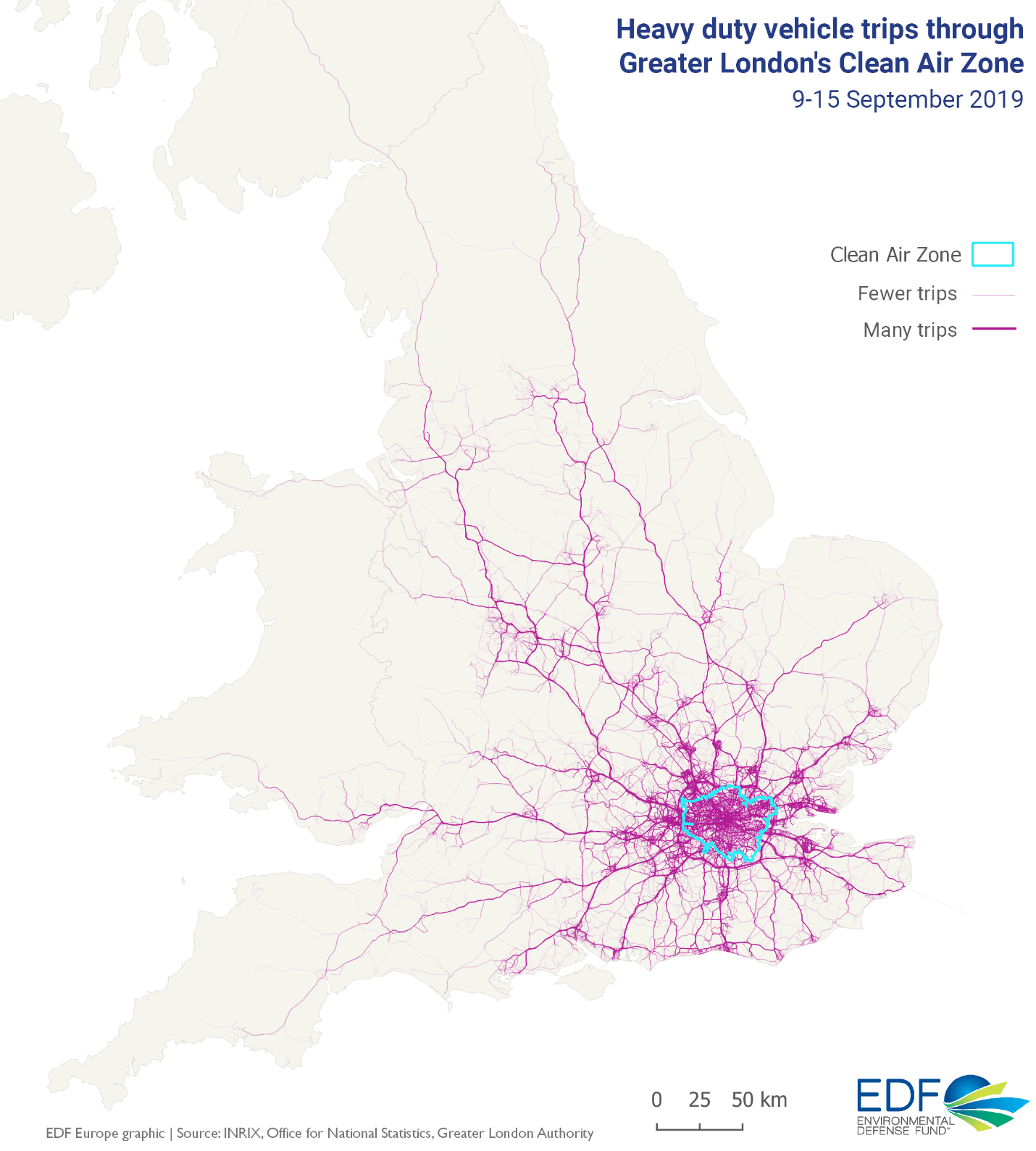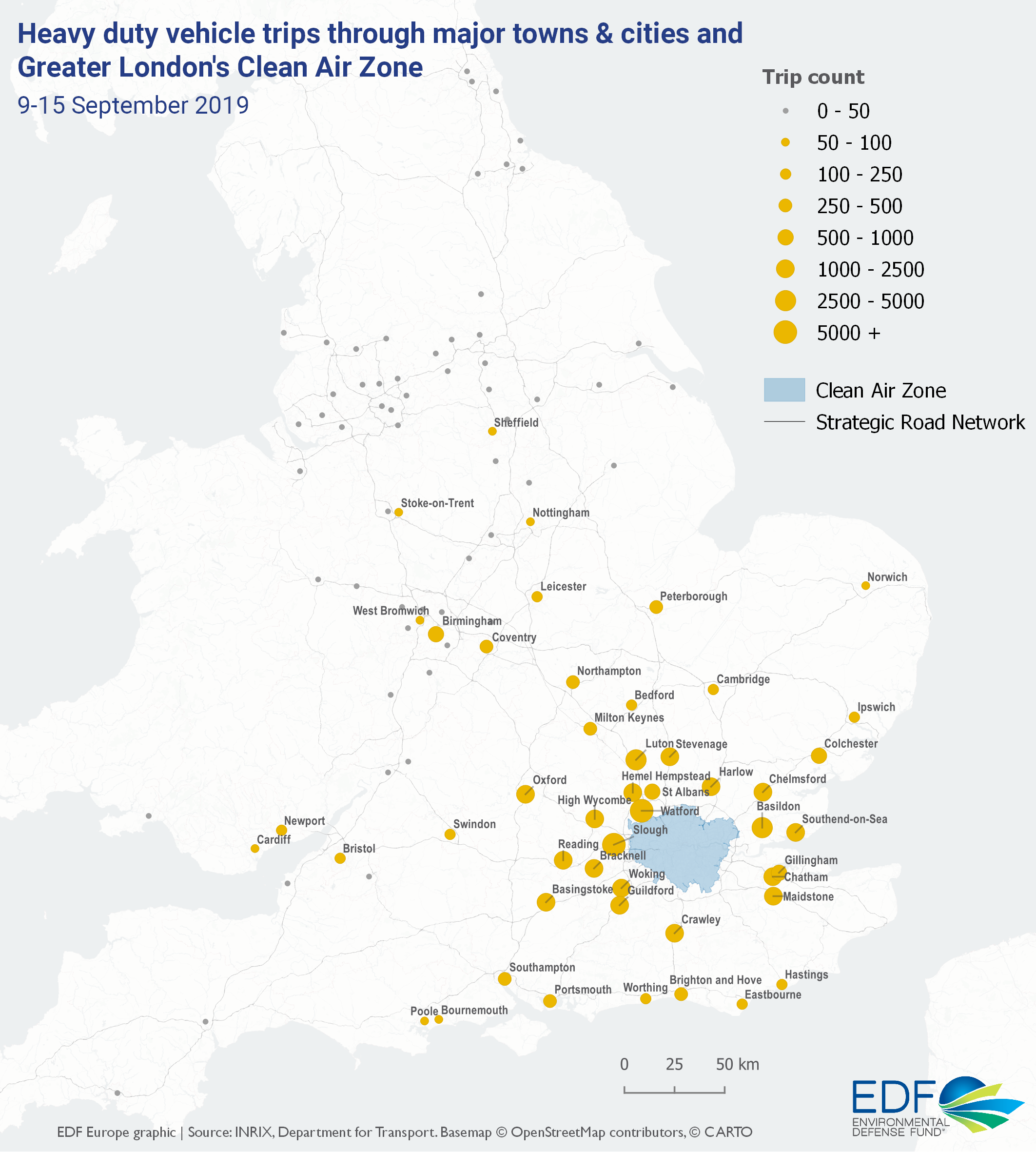By: Oliver Lord, Head of Policy and Campaigns, and Greg Slater, Senior Data Analyst
By incentivising cleaner vehicles, Clean Air Zones are a critical tool for improving air quality and addressing pollution from transport. Clean Air Zones are taking off across the UK – London, Bath and Birmingham have all introduced their own zones, and Manchester and Bristol are set to launch one in 2022.
Although these zones are deployed locally, our new data analysis reveals how the true ‘reach’ of Clean Air Zones goes far beyond their boundary – likely bringing air quality benefits to millions of people in London and across the country.
Clean Air Zones drive change
Clean Air Zones encourage cleaner vehicles by charging older, more polluting vehicles to enter the zones, often located in busy city centres.
In 2019 London launched its first Clean Air Zone for nitrogen dioxide (NO2) – known as the Ultra Low Emission Zone (ULEZ), which requires cleaner emissions standards for vehicles driving through central London. When looking at compliance rates, it’s easy to see how the ULEZ spurred an acceleration of cleaner vehicles. In February 2017, nearly 40% of all vehicles driving in what would become the ULEZ met the emissions standards. By the time the ULEZ debuted roughly two years later, that number had jumped to 73%.
Whilst the success of the central London ULEZ has been widely reported, it is less known that in March 2021 nearly the entire capital became an NO2 Clean Air Zone for heavy duty vehicles. That means all lorries, buses and coaches driving in Greater London must meet emissions standards or pay a fee. By the end of 2020, an average of more than 92% of heavy duty vehicles met these standards – an indication of how the industry was shifting to prepare for the restrictions.
Analysing the ‘reach’
Although the emission standards are for vehicles driving inside the Clean Air Zone, we suspected that most journeys don’t remain inside the zone – delivering health and clean air benefits beyond the boundaries.
To examine the ‘reach’ of Greater London’s Clean Air Zone for heavy duty vehicles, we analysed a dataset produced by INRIX[1] that represents trips in a sample week. Since the pandemic has been hugely disruptive since March 2020, we looked at a week from September 2019.
By focusing on trips that passed through Greater London’s Clean Air Zone, we found that heavy duty vehicles drove further outside of the zone than within – on average twice as much distance. The map below reveals how – in just one week – large vehicles that were subject to the emissions standards were consistently driving many kilometres outside of London.
We also wanted to understand how many people these vehicle journeys were potentially reaching. Again looking at heavy duty vehicles crossing through Greater London’s Clean Air Zone, we found that they passed through nearly 95% of major towns and cities in England and Wales, which together have a combined population of 18 million people.
This analysis reveals how people living and working outside Greater London’s Clean Air Zone, even as far as Cardiff and Stoke-on-Trent, also benefit from the cleaner vehicles and reduced emissions brought about by the zone. As a result, city-level policy and the introduction of Clean Air Zones can benefit the health of people throughout the UK.
[1]Data was procured from INRIX. INRIX has no affiliation with the analysis or results.


